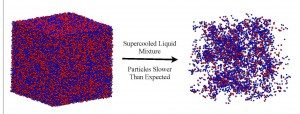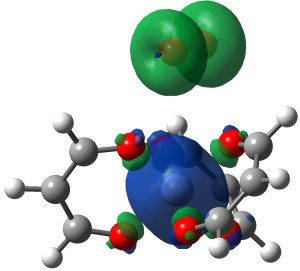Anthony Rappé: Understanding photochemistry of earth-abundant materials*
Project Description: Step minimization is a mantra of energy efficiency as well as waste reduction. As we project toward a sustainable future selectivity, catalysis, earth-abundant materials, as well as utilizing solar energy are important considerations.
Within the Organic photocatalysis literature there are numerous examples of light-driven catalytic oxidations and reductions that are significantly more product and diastereo selective than the corresponding electrochemically-driven processes. When earth-abundant first row transition metals are thrown into the mix electron spin becomes a challenging ancillary variable. The summer research student working on this project will use electronic structure software to compute excitation energies as well as excited state reaction profiles for earth-abundant photocatalysts. The research student will learn the basics of scientific programming, the use of electronic structure codes, and gain a better understanding of sustainable chemistry.
Grzegorz Szamel: Investigation of dynamical heterogeneities in supercooled liquids
 Project Description: The viscosity of supercooled liquids increases by orders of magnitude upon a small change of temperature or density. One striking observation of the supercooled liquids dynamics is that while molecular motion slows down, it becomes extremely heterogeneous. In other words, there are molecules which move much farther and much less than expected, and these molecules form clusters. The summer research student will examine these so-called dynamic heterogeneities in model glass- forming systems by performing molecular dynamics simulations and analyzing the resulting trajectories. The student will be introduced to molecular-dynamics simulation techniques, scientific programming, and the statistical mechanics needed to study fluid systems.
Project Description: The viscosity of supercooled liquids increases by orders of magnitude upon a small change of temperature or density. One striking observation of the supercooled liquids dynamics is that while molecular motion slows down, it becomes extremely heterogeneous. In other words, there are molecules which move much farther and much less than expected, and these molecules form clusters. The summer research student will examine these so-called dynamic heterogeneities in model glass- forming systems by performing molecular dynamics simulations and analyzing the resulting trajectories. The student will be introduced to molecular-dynamics simulation techniques, scientific programming, and the statistical mechanics needed to study fluid systems.
Robert Paton: Combining Quantum Mechanics and Chemistry Big Data
Project Description: Quantum chemical calculations can be used to obtain the 3-dimensional structure of most organic compounds. With this approach it is even possible to study the geometries of transition structures, which exist only for a fleeting moment during a chemical reaction. Nevertheless, these calculations are relatively slow to run, making it difficult to apply them in a high-throughput fashion. In this project we will mine the data from openly-accessible datasets of optimized molecular structures to accelerate the performance of quantum mechanical geometry optimization. This work will combine scientific programming, cheminformatics and quantum chemistry. We will develop a tool to allow us to obtain high-quality structures for a large dataset of potential pharmaceutical candidates.

